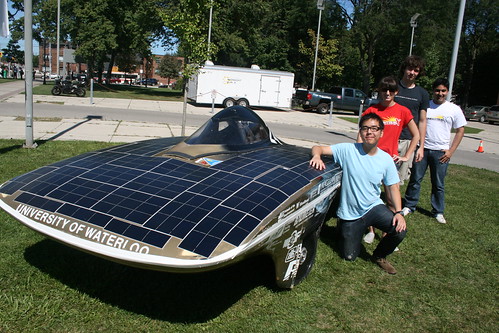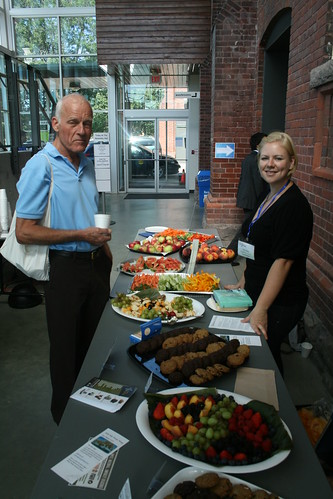Now that the most recent Ontario provincial election has passed, it’s probably a good time to reflect on the government’s renewable energy policy and how we ensure it is implemented most usefully for the benefit of all citizens. Given the current economic climate, my main focus is on sustaining local communities. Our current energy system is a relic of the middle of the last century when mass production ruled - large centralized plants delivered large quantities of very similar products. Examples include the big steel mills that dominated Hamilton’s skyline and the Big 3 car plants in places like Oshawa. Even computing was subject to this model as the initial dominant form was the large centralized mainframe. Electricity has predominantly been generated in large centralized plants whether it was hydro, nuclear or coal power.
In many other industries this approach has evolved, most visibly in computing where computing devices are now ubiquitous and linked together by the Internet. Electricity is, to some extent, still battling against the prevailing winds of a more distributed model of supply and generation. We still produce it centrally and distribute it into communities from many miles away. This means that at least 75 cents of each energy dollar leaves the local economy. Less money remains to support local businesses and provide jobs for local people. In addition, the scale of centralized power plants means that only very large corporate- or government-owned entities can build and operate them. The scale drives transmission over distances which increases transmission loss. In the United States, transmission losses are estimated to be between 6 - 7% of all the power put into the grid.
Generating power close to its use reduces the cost of distribution and particularly long-range distribution power losses. It also reduces the risk due to transmission failure. Remember, the Internet was deliberately designed as a network with no single point of failure by providing many alternate routes and having no central control point. Our electricity distribution network is not. Hence, in August 2003, the failure of one generator in the FirstEnergy plant at Eastlake Ohio triggered cascading failures which eventually totaled over 500 generating units at over 250 plants. It reduced the available power by 80% over an area that ran from Sault Ste Marie to James Bay to Newark, New Jersey.
However, just distributing power generation is not enough. All energy generation incurs costs as well as benefits. If the local generator is not locally owned then the community will not get enough of the benefit to put up with its attendant costs. All wind energy projects constitute an economic development opportunity for the communities that surround the project. However, local communities may only see a small portion of the benefits from such investments. It is not uncommon for less than 15% of project-related construction expenditures to remain local. Studies undertaken in Iowa suggest that locally owned wind generation creates up to 10 times more economic activity in the local community than does wind generation owned by out-of-state companies. When the owners are local, they are more likely to purchase local construction materials and hire local residents ensuring profits stay in the community too.
Community Power is a class of sustainable energy projects that are owned, developed and controlled in full or in part (50 per cent or more) by residents of the community in which the project is located. Community Power has spurred the development of renewable energy in Europe. For instance, in the Netherlands 60% of wind turbines are owned by farmers and 5% by communities; in Germany 10& are owned by farmers, while 40% are owned by communities; and finally, in Denmark, 64% are owned by farmers, while 24% are owned by communities.
 |
| WindShare Turbine, Exhibition Place, Toronto, Ontario |
However, Community Power does not exist in a vacuum and is clearly in its infancy. On October 31, Energy Minister Chris Bentley confirmed a long-expected review of the FIT Program. Deputy minister Fareed Amin in conjunction with OPA CEO Colin Andersen, will lead the review. Obviously this introduces some uncertainty into the atmosphere and makes it important that supporters of sustainable energy ensure their voices are heard.
One way to learn more about the review, to discuss how to respond and to include your say in a strong and consistent voice is to join the Ontario Sustainable Energy Association for its third annual Community Power Conference. Hear about and discuss the FIT review, Green Energy Ontario 2.0, and receive practical training on how to drive community-led and community-commercial project partnerships.
~ Neil Fairhead
Ontario Sustainable Energy Association
Community Power Conference
November 14th and 15th, 2011
Metro Toronto Convention Centre South, Level 800, Hall G & Room 803
222 Bremner Blvd., Toronto, ON
http://cpconference.ca/
+v2.jpg)









